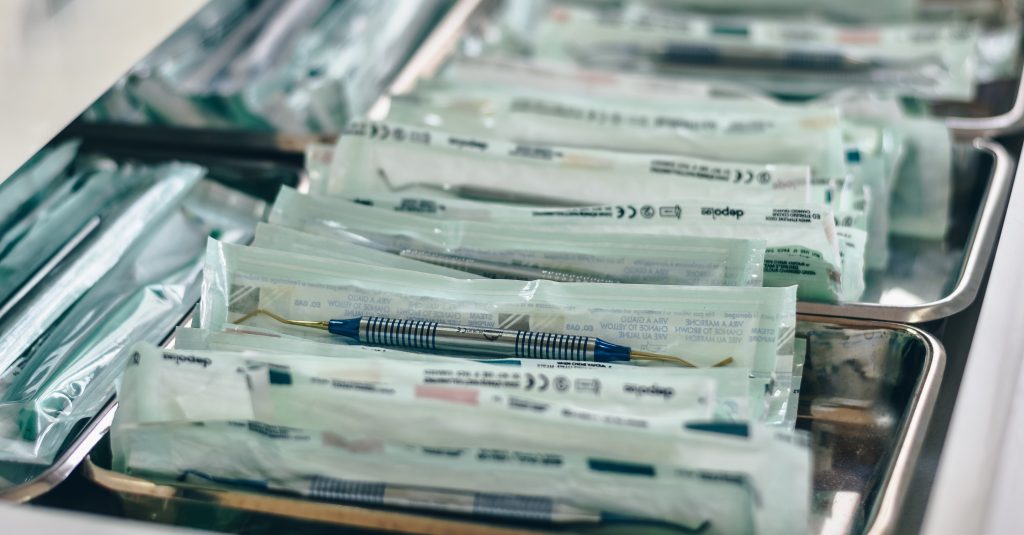In Worcester, a periodontist performs osseous surgery. Just enough gum tissue is folded back away from the tooth once the area has become numb in order to reveal the damaged root surfaces. Then, the tooth’s hardened bacterial deposits can be cleaned off.In reality, osseous surgery is different from what most people imagine when they hear the word “surgery,” being more like a deep dental cleaning operation. This very painless procedure can help control gum disease and potentially avoid the need for more complex surgical operations.Only when non-surgical treatment is not an option is osseous surgery necessary. Most people can maintain good oral hygiene every day, which is based on brushing with fluoride toothpaste and flossing. Plaque, the bacterial film that causes gum disease, is removed with the use of this procedure.If the dentist performs osseous surgery while using gum tissue grafts, the gums may regrow. In order to promote dental gum regeneration if you have suffered a large loss of gum tissues, the dentist may implant gum tissue grafts.
What You Should Know About Pocket Reduction, a Form of Osseous Surgery?
If you’ve got a wholesome mouth, there ought to be much less than a 2- to 3-millimeter (mm) pocket (rift) among the bottom of your enamel and gums.Gum sickness can grow the dimensions of those wallets.
When the distance among your enamel and gums will become deeper than five mm, the location will become hard to easy at home or maybe with an expert cleaning with the aid of using a hygienist.
Gum sickness is as a result of a buildup of micro organisms that seem as a sticky and colorless plaque.
As your wallet gets deeper, greater micro organisms can input and put it away at your gums and bone. If left untreated, those wallets can also additionally preserve to get deeper till your teeth wish to be removed.
Osseous surgery, additionally called pocket discount surgery, is a system that receives rid of microorganisms dwelling in wallets. During the system, a health practitioner cuts lower back your gums, gets rid of the microorganism, and maintains broken bones.
What are osseous surgery’s objectives?
Osseous surgery’s primary objective is to eradicate or minimize pockets created by gum disease.Gingivitis is a mild kind of gum disease that hasn’t affected your jawbone or connective tissue. According to estimates, gingivitis affects up to 90% of the world’s population.
Periodontitis can develop from gingivitis if it is not addressed. The bone that supports your teeth might become damaged as a result of periodontitis. Untreated gum disease and dental pockets may eventually result in tooth loss.
The success rate of procedures for gum disease is very good, including osseous surgery.The success of the procedure can be improved by abstaining from cigarettes, maintaining proper oral hygiene, and paying attention to your dentist’s post-surgery advice.
Osseous surgery is often risk-free, but it can occasionally lead to:
- sensitivity of the teeth
- recession of the bleeding gums
- tooth decay
Procedure for pocket reduction surgery
Surgery for pocket reduction typically lasts two hours. The operation is normally carried out by a periodontist.
In the event that root planing or antibiotics are unable to treat your severe gum disease, your dentist may advise pocket reduction surgery.
What to anticipate throughout your procedure is as follows:
- Your gums will be numbed by a local anesthetic.
- Your gum line will be slightly incised by the periodontist. The bacteria underneath will then be removed when they fold back your gums.
- Any broken or oddly shaped parts of the bone will then be smoothed down.
- A periodontal regeneration treatment can be necessary if your bone is severely damaged. These methods involve guided tissue regeneration membranes and bone transplants.
- To stop the bleeding, your gums will be stitched back and coated with a periodontal dressing.
Alternatives to osseous surgery:
To save your tooth if your gum disease has advanced, osseous surgery may be required. However, in cases of minor gum disease, root planing and scaling may be advised.
Root planing and scaling:
The gold standard initial treatment method for periodontitis is scaling and root planing.If you have a minor gum condition, a dentist might advise it. A deep cleaning technique called scaling and root planing involves removing built-up plaque and smoothing out exposed root surfaces.
Antibiotics:
To get rid of bacteria that has accumulated in your pockets, a dentist may advise either topical or oral antibiotics. Treatment options for minor gum disease include antibiotics.
A bone transplant:
A dentist could advise bone grafting if periodontal disease has deteriorated the bone supporting your tooth. Pieces of your own bone, donated bone, or synthetic bone are used to create the transplant.
Following the procedure, new bone will develop around the graft to support the retention of your tooth. In conjunction with pocket reduction surgery, bone grafting is an option.
Grafts of soft tissues:
Gum recession is frequently caused by gum disease. A portion of skin from the roof of your mouth is utilized to cover your gums during a soft tissue graft.
By using a process called guided tissue regeneration, you can repair bacterially-damaged bone.
A special cloth is inserted during the surgery between your bone and teeth. The material allows your bone to rebuild without interference from other tissues.
